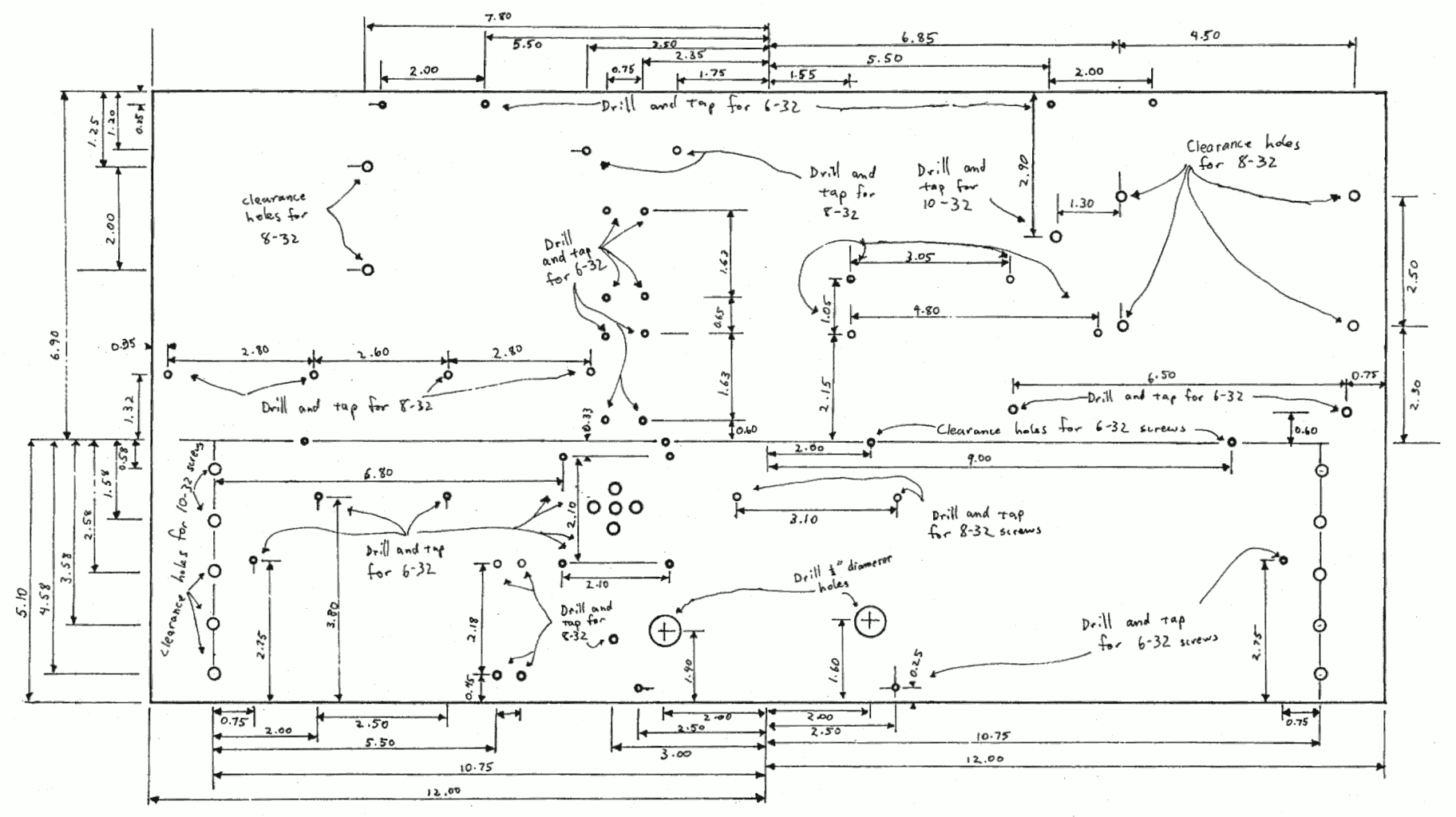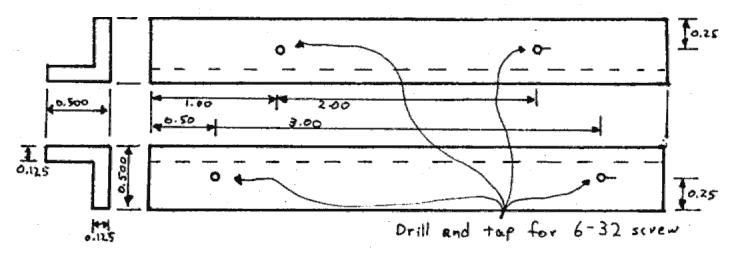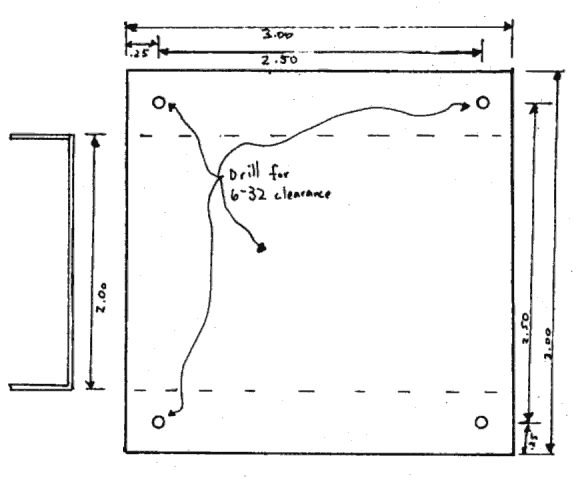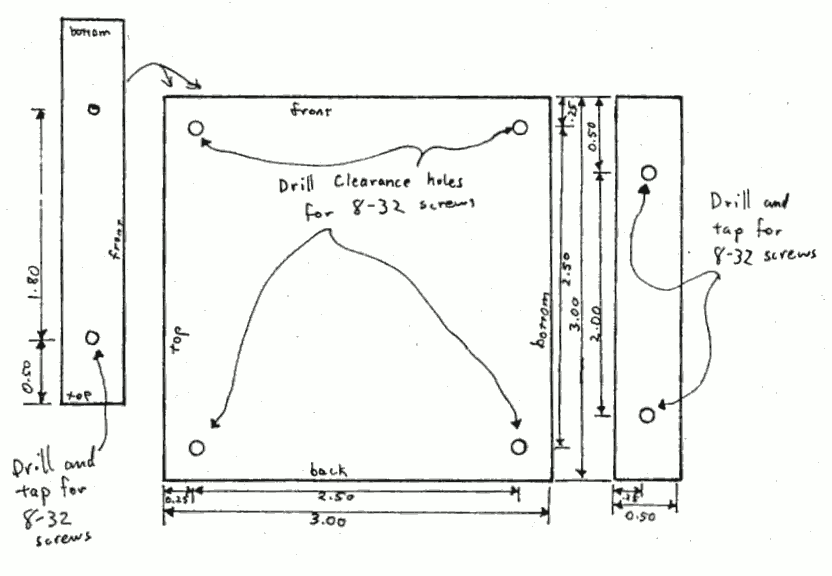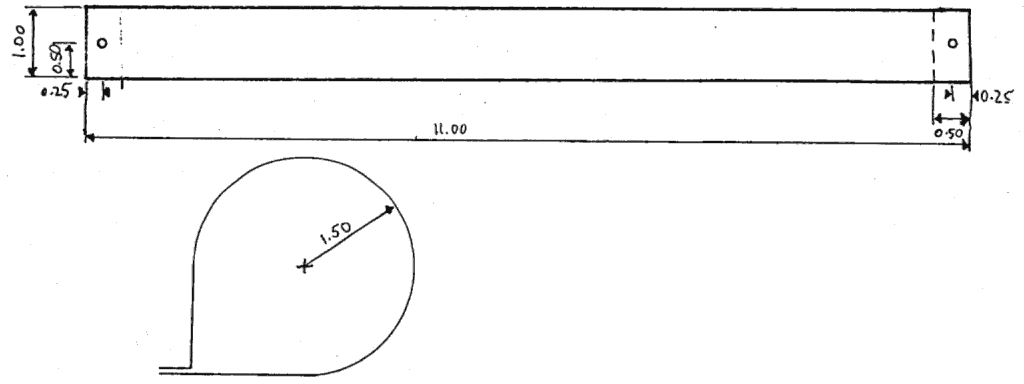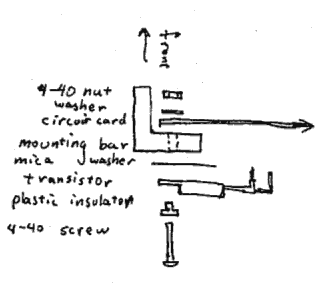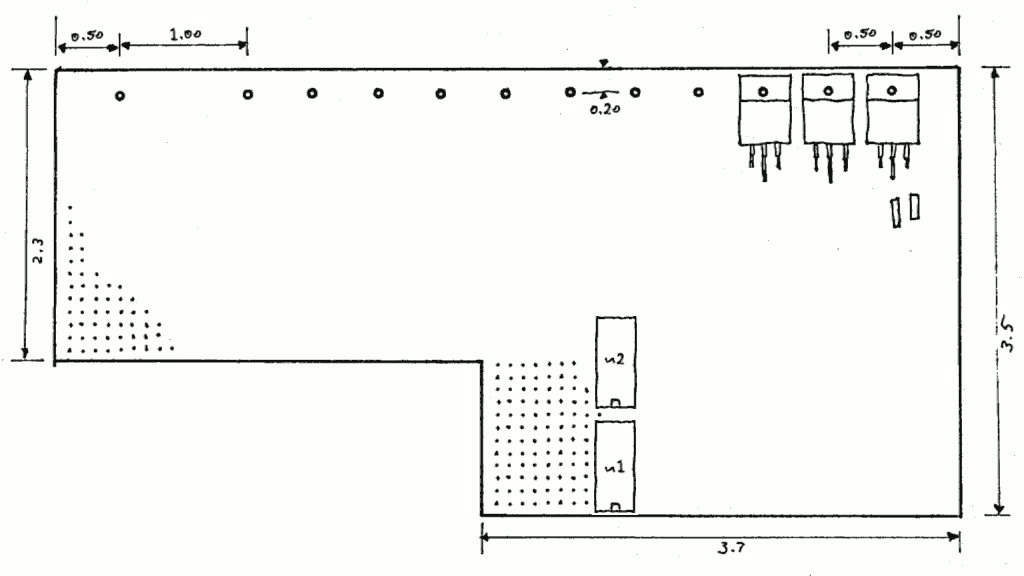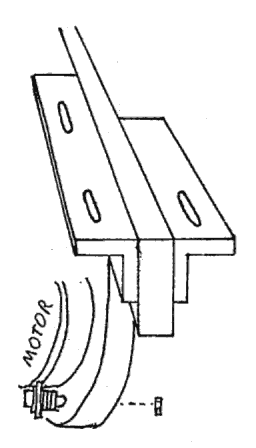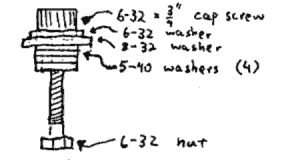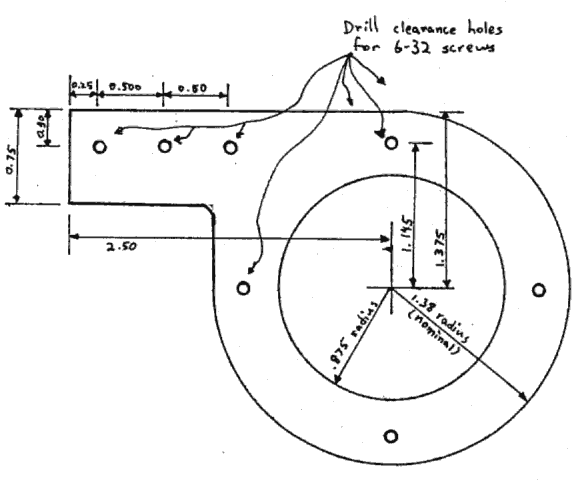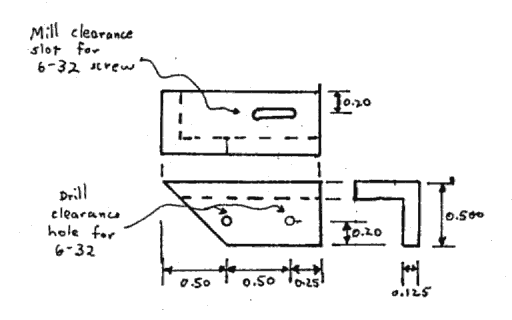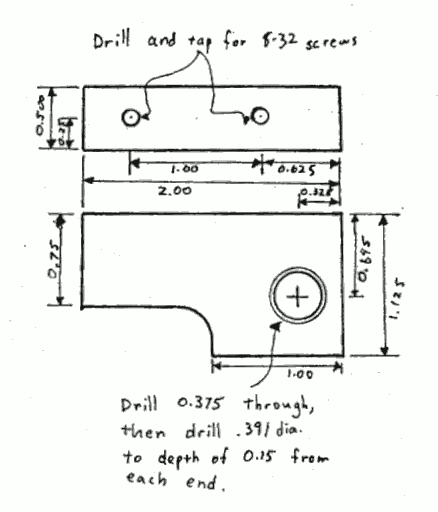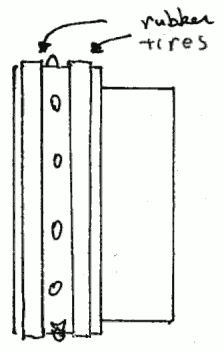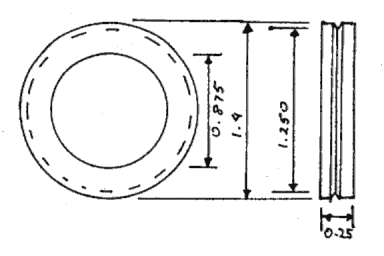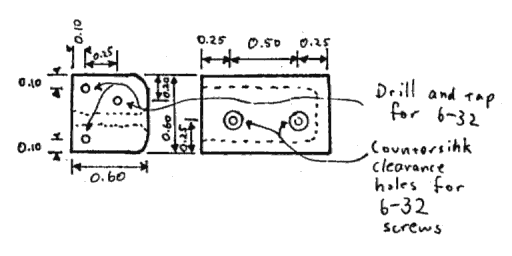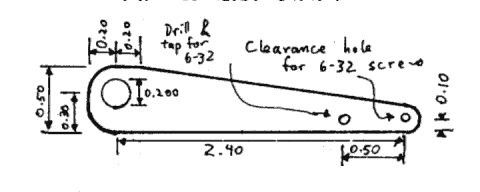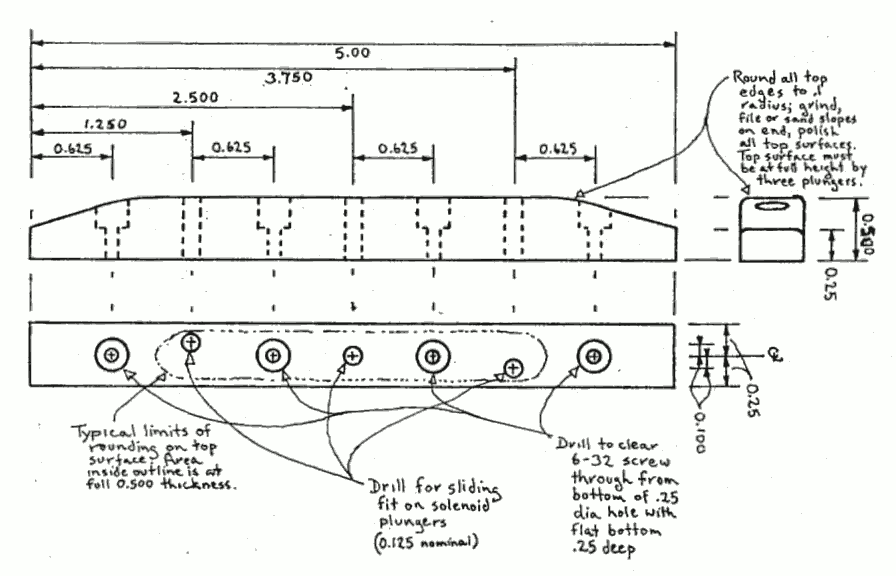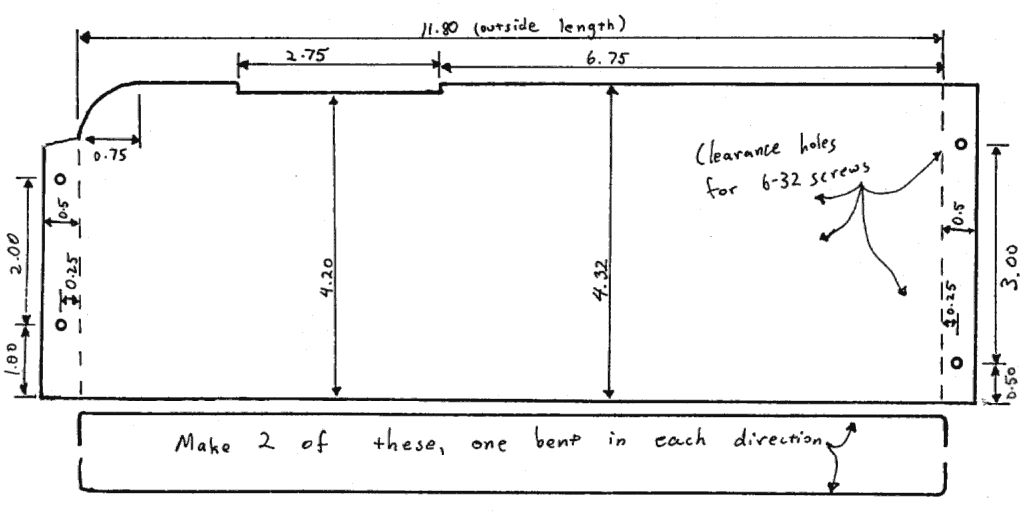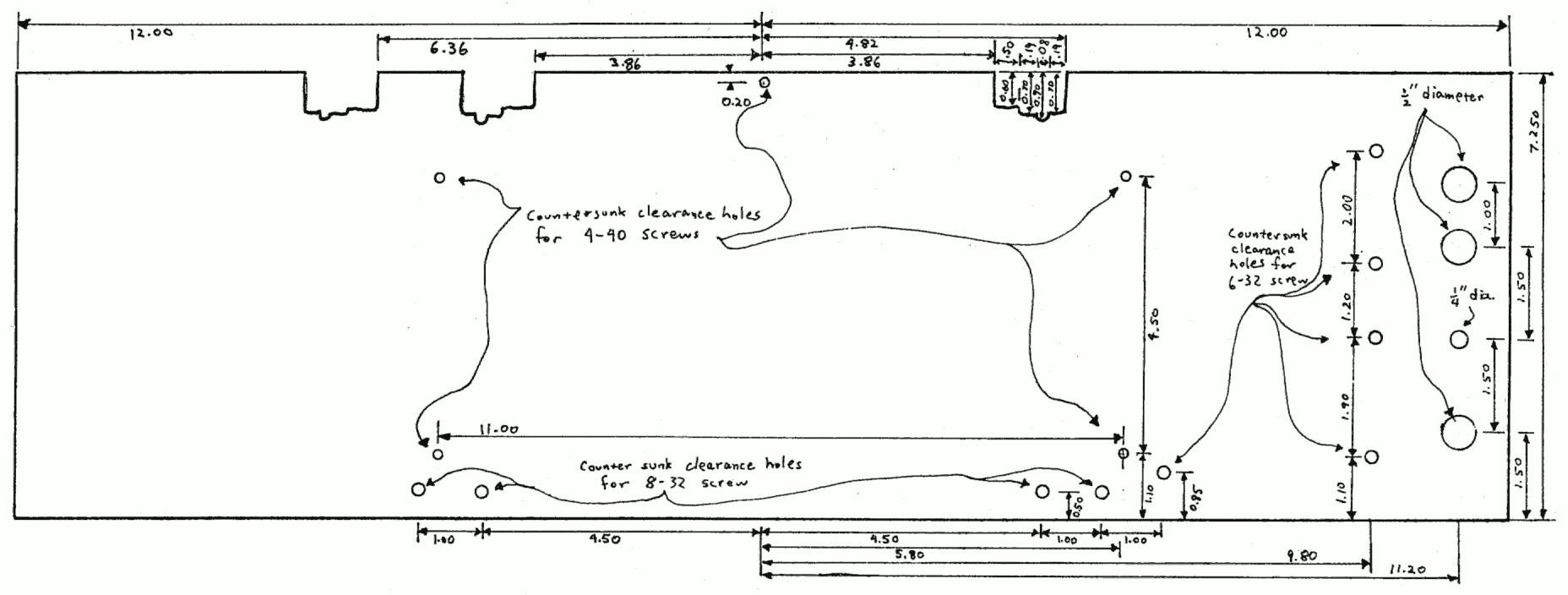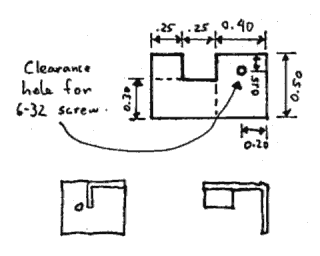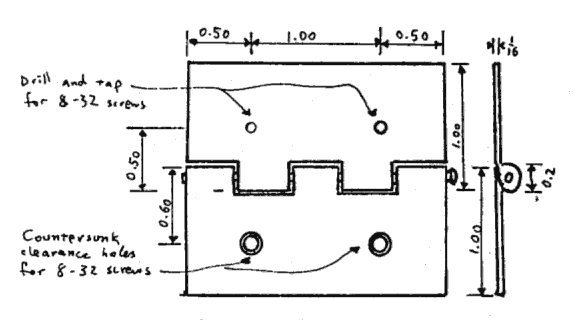Numbers (such as 3.1.7.1) given with each figure caption reference the parts
list making up section 3 of the text.
Carriage Installation (3.1.12.1)
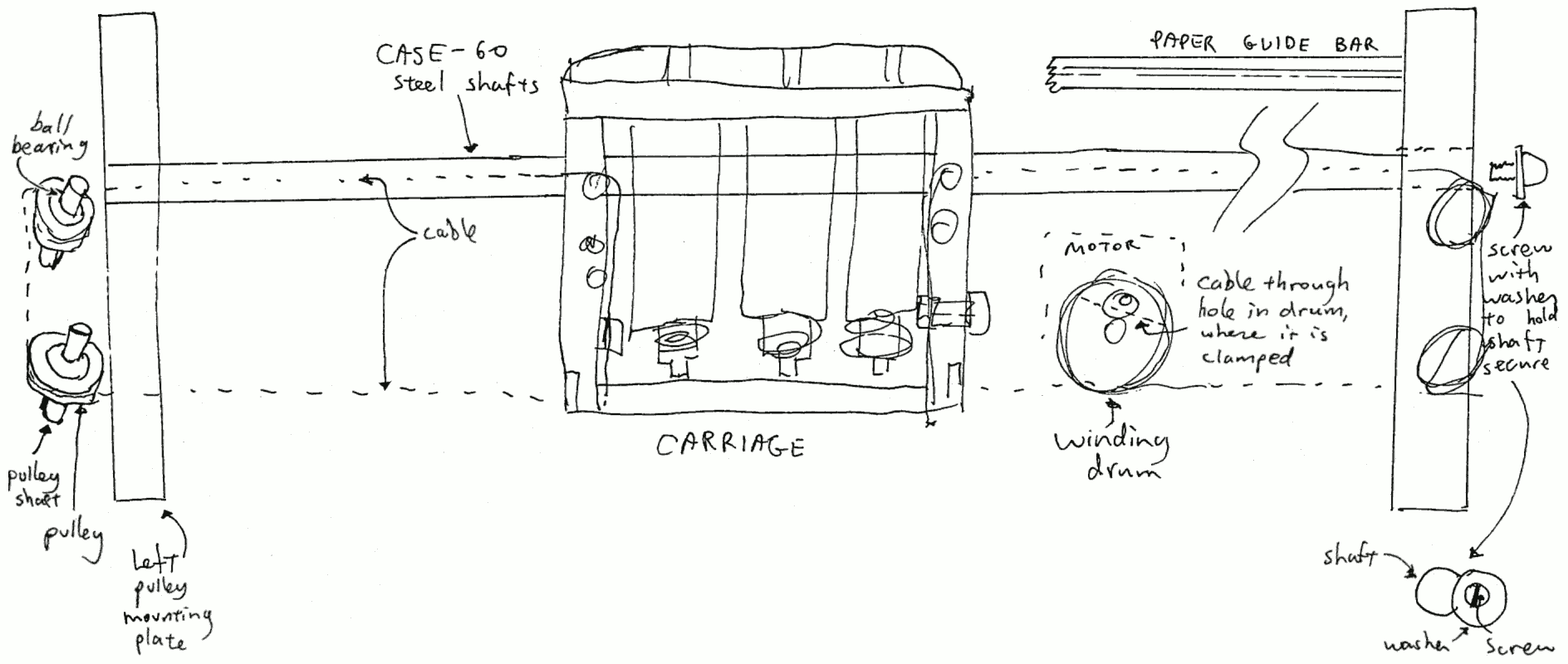
|
|
| To install the carriage cable:
|
|
| 1) Cut a 6-foot length of cable.
|
| 2) Feed it through the hole in the winding drum and tighten the
clamp screw in the winding drum leaving an approximately equal
length of cable on either side.
|
| 3) Wind each end around the drum 3
times one end on each side of the clamped cable.
|
4) Feed the cable around the pulleys on each end plate,
a) through the small hole in each carriage end plate,
b) down around the short brass rod
in the slot in the end plate,
c) down through the carriage clamp bolt,
d) down through the holes in the ends of the carriage
bottom plate,
e) and down through the large holes in the base plate.
|
| 5) Tighten one clamp bolt (either one).
|
| 6) Attach a 20-pound weight to the unclamped end of the cable.
|
| 7) Tighten the clamp bolt above the weight.
|
| 8) Cut off the excess cable at both ends, even with the bottom of the
carriage.
|
Carriage Assembly (3.2.7)

|
|
Make 2 1.00 × 0.250 dia pins (dia +000,-0.001) to hold
carriage top plate to end plates.
|
|
|
Fix top plate to end plate with 4 8/32 × 3/4 cap screws,
slots with pins in end plates face each other.
|
|
Loosely mount clamp bolts in 1/4 dia holes in end plates,
bolt head inside, nut outside.
|
|
Mount solenoids loosely in holes in top plate,
from inside with nuts in wells on outside.
|
|
Mount die guide on top plate with 4 6-32 × 3/4 cap screws,
check for free sliding of solenoid plungers.
|
|
Mount bottom plate between ends of end plates, well facing up,
2 mounting holes in side facing opposite the ramps on the
end plates, with 4 8-32 × 3/4 screws.
|
|
Tighten all but the clamp bolts,
attach terminal strip to side of bottom
plate with 2 4-40 × 3/8 screws.
|



